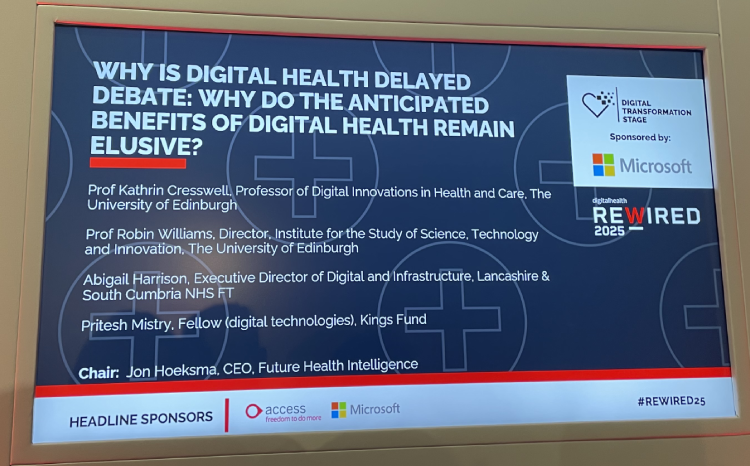Implementation: ‘The NHS should take a leaf out of NASA’s book’
- 26 March 2025

If sending humans to space has taught us anything, it’s that technology alone isn’t the answer. Implementation is everything, writes The Health Foundation’s Ben Shemesh
NASA, one of the most technologically advanced organisations on Earth, doesn’t rely on the latest technology simply for the sake of innovation. Instead, it prioritises reliability, usability, and rigorous integration into standard mission operations.
The NHS could take a leaf out of NASA’s book. Quite often, new policy initiatives and the wider political narrative focus on cutting-edge, early-stage innovation and a futuristic frontier. But there’s often far less emphasis on effective implementation and use of new tech, and virtually none on optimising the use of existing technologies.
No automatic time savings
Despite the huge potential for technology to increase productivity and improve patient care, technologies often fail due to poor implementation. That is, in part, due to the widespread assumption that acquiring technology will automatically lead to greater productivity. But we know from previous experience that this is not the case for the NHS – nor more generally. In particular, the failure of technology to increase productivity or free up time has been described in economic studies as the ‘productivity paradox’ and is well-documented in health care.
Our latest Health Foundation analysis explored the use of technologies to free up staff time, including situations where technologies had no or negative impact on staff time. We found that, when looking at the impact of different types of technology on staff time, the results are generally mixed, with some instances of the technology successfully saving staff time and others where it has failed to do so.
Whether a technology generates time savings very much depends on how it is implemented and used – that is, how successfully it is embedded into practice and how effectively workflows and processes are redesigned to take advantage of the new functionalities it offers.
Looking at a sample of 467 studies that explored whether technologies saved healthcare staff time, we found that for different types of technology there was considerable variation in the proportion of studies that find time savings. This suggests that some technologies may have more complex implementation challenges than others. For example, while 85% of the 27 studies on computerised decision support showed time savings, only 52% of the 31 studies on robotic surgery showed time savings. While we can’t make broad generalisations from these studies alone, the data highlights that more complex technologies may bring more complex implementation challenges.
Invest in processes, training and support
To realise the benefits of technology, we need to focus on ensuring it is implemented and used well, not just on procurement.
NASA doesn’t launch technology into space and hope for the best. Significant resources ensure new systems are seamlessly integrated
Obviously, NASA doesn’t just launch new technology into space and hope for the best. Significant resources are dedicated to ensuring new systems are seamlessly integrated before anything leaves the ground. Astronauts undergo extensive training in simulated environments to ensure they can use technology effectively under real-world conditions. NASA also invests heavily in process development and troubleshooting – creating clear procedures, redundancies and checklists to address failures before they happen.
When it comes to technology, the NHS should adopt a similar perspective. For example, our analysis found the main reasons technology can have a negative impact on staff time were related to workflow integration, usability, and skills. Initiatives to roll out technologies in healthcare must aim to address implementation challenges such as these, for example through support for design, training or evaluation. The 10 Year Health Plan presents an important opportunity to improve on previous tech programmes by shifting the focus beyond procurement to effective implementation and optimisation.
Over the years, healthcare has learned from other safety-critical industries like aviation and nuclear in relation to its ways of working – and the adoption of healthcare technology should be no exception. Like NASA, it’s time to invest in the processes, training and support structures that will allow technology to be used safely and to its full potential.






1 Comments
Nasa has been trying to put an astronaut on the Moon for decades.. its failed due to political interference, underfunding, a regular change in government priorities, and a lack of innovation. Sound familiar? Nasa really isn’t a model.